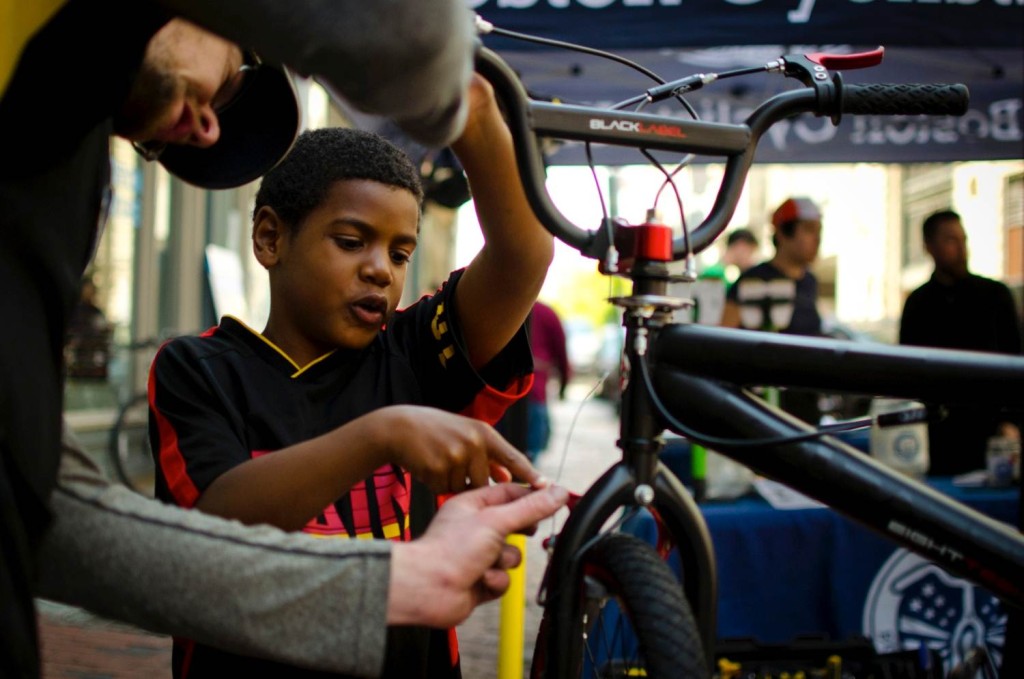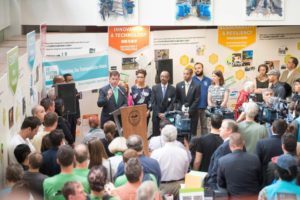
What if it was faster to take the T to downtown Boston than a car? Imagine what Boston would be like if we could get from East Boston to Cleveland Circle in 20 minutes. That’s where Go Boston 2030 comes in.
Alice Brown is the Project Manager for Go Boston 2030–a citywide initiative to envision the future of transportation in Boston for the next 5, 10 and 15 years. This data-driven, 18-month process will propose how transportation can support significant improvements in equity, climate, and the economy. We sat down with Alice to learn more about the initiative and how it aligns with the City’s climate mitigation and preparedness efforts.
1. Can you share with us how Go Boston 2030 ties in to Boston’s Climate Action Plan? What are its other priorities?
Ensuring that Boston’s transportation infrastructure is resilient to the effects of climate change and that people travelling in the city are incentivized to use more sustainable modes of transportation is a fundamental pillar of Go Boston 2030. We are also using one of the main targets of the Climate Action Plan — to reduce the total vehicle miles travelled by 5.5% below 2005 levels by 2020 — to guide our future project selection.
Equity and Economy are the other two pillars of the plan. We want communities that have been historically underserved by transportation to have improved access to transit, walking, and cycling options while protecting the affordability of their housing stock. Meanwhile, we also want to provide improved connections to employment and educational opportunities particularly in thriving job districts outside the downtown.
2. What can we do to better prepare our transportation infrastructure for climate change? What have we done so far?
Boston history is based on being a major coastal city and has always been aware of its relationship with the water. Tunnels, bridges, and roadways that are vulnerable to flooding and storm surges are being designed and improved to ensure that they remain resilient as sea level rise progresses. State agencies like MassDOT, the MBTA, and the Department of Conservation and Recreation (DCR) are continuously working to protect and improve most of the infrastructure likely to be initially affected by severe weather.
The Boston Complete Streets design guidelines include many localized ways to absorb storm water runoff with permeable paving, street trees planted in structured soil, vegetated rain gardens, and stormwater planters. We are also using last winter’s snow storms as a learning tool to improve our response to snow clearance demands so that our transportation system can recover more quickly.
3. Parking is a hot button issue in Boston. What are some ways that we’re tackling this challenge?
This spring Mayor Walsh announced a series of Early Action Projects for Go Boston 2030. One project is the installation of intelligent multi-space parking meters throughout the city making it easier to pay with mobile apps as an alternative to credit cards or coins. Not only does this allow for the potential of fitting more cars along a curb, it will provide better data for the City of more effectively manage parking. In the long run, meters may adjust prices to be demand responsive, which would in turn reduce congestion from people circling the block to find a space.
4. Go Boston 2030’s Question Campaign gained a lot of traction in the city. Can you share some of the results with us?
This winter we collected roughly 5,000 questions about getting around Boston in the future. Questions about how we power our cars and buses came up regularly and included requests for more electric charging stations, solar power, and other alternatives to fossil fuels. Other questions reminded us that if there will be more water, we should expand ferry service or think about canals.
Some questions demonstrate broad thinking about meaningful change. One person asked, “Why do we wait so long to enact all of our best transit options and create truly spectacular streets? Will we have the wisdom to continue to think beyond the car?” And people who are ready to stop driving in Boston are still seeking alternatives for exploring beyond the city’s borders with questions like “How can I live car-free in the city but still have access to a transportation method to get out to a beautiful New England town on the weekends?”
5. After the success of the Go Boston 2030 Visioning Lab last month, what are the next steps and how can Bostonians stay involved?
If you attended the Visioning Lab, donated a question, or have just been following along as the process unfolds, we hope that you’ll review the draft Vision Report towards the end of the summer. Then, in the fall, everyone is invited to help us develop the projects and policies that will be featured in the final Action Plan. We’ll be back out in neighborhoods with more ways to participate.



Recent Comments